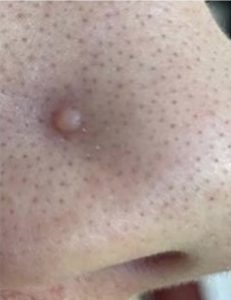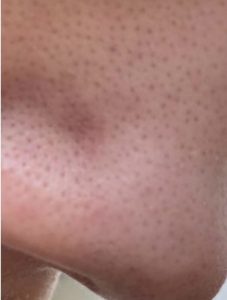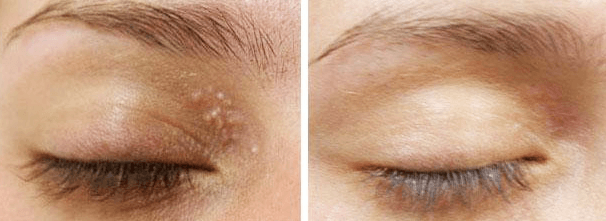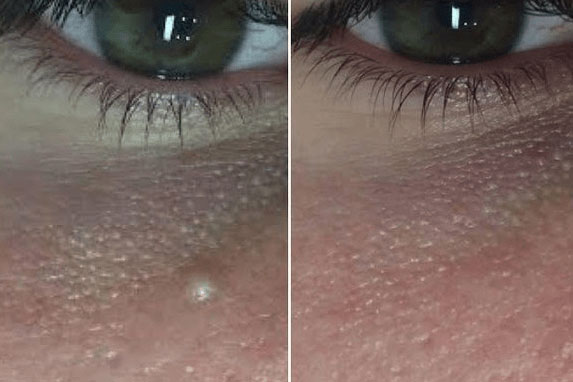Milia / Xanthelasma / Syringoma / Fibrous Papules
What are Milia?
See those little white bumps around your eye area? That’s Milia, they lie just underneath the skin. Milia is a plug of sebaceous material and cellular debris that gets trapped as there is no pore they can’t simply be extracted like a pimple.
Causes of Milia
There are a number of reasons can cause Milias which are the following:
- Heavy Skin Products
The use of heavy skin care products that can be used on the face that will cause milias, this could be make up removers some typical comedogenic creams can inhibit dead epidermal cells causing this condition. In addition, heavy sunscreens, hair spray, hair gel and mousse, as well as moisturisers can cause this condition.
- Sun Damage
Sun Damage for a longer period can cause the skin due to cumulative exposure to the sun. Also, an ageing skin tends to form a thicker epidermis which makes it difficult for the natural exfoliation of hair follicles and skin cells from finding their way out of the glands.
Other typical causes could be,
- Dermabrasion and other skin resurfacing treatments
- Skin blistering injuries resulting from poison ivy
- Burns
- long use of steroid cream
Symtoms, Signs & Treatment for Milia
The signs and symptoms are easily noticeable with the common signs including dome-shaped white/yellow bumps that are nor itchy nor painful. The white small bumps are mainly located on the nose, cheeks, eyelids and forehead. In some cases, infant Milia do not need any treatment since the milias disappears after a short period time. Milia in adults and older children that do not disappear itself can be treated using various techniques.
Milia is a condition that has for so long been considered normal and can be quite unsightly if it spreads to majority parts of the face areas. It disrupts and distorts the natural skin texture and complexion therefore should removed.
Treatment Details
The treatment usually takes around 20- 30 minutes, using a small electrical probe the Milia is heated gently which causes the superficial layer of skin to soften up and the milias is then extracted out, the skin then scabs and goes through a healing process which depends on the persons natural healing process recovery rate. Once the skin scabs, the scabs then falls off for the skin to heal over. Downtimes will take place as the skin requires healing time after the extraction process.
Enquire about this treatment
Call us on 01204 405114
Xanthelasma
The causes leading to Xanthelasma and Syringoma are different the treatment for both are similar. Xanthelasma is a condition which is soft and yellow papules which are filled with cholesterol over the medial canthus of the upper eye lid. There are few conditions which are linked with Xanthelasma such as diabetes and hyperlipidemia.
How to Remove Xanthelasma?
There are several treatments available to remove Xanthelasma such as Electro-Cautery, Cryotheraphy, Laser and Fibroblast. For more information please contact us on 01204405114.
Can Xanthelasma Go Away Naturally?
Xanthelasma does not go away on its own and remains the same size but some instances can grow larger. It is a harmless soft or in some cases semi-solid bump and it can affect your vision and functioning of your eye lids. It is not possible to remove Xanthelasma at home and you would need to get it seen to by a professional, please contact us on 01204405114.
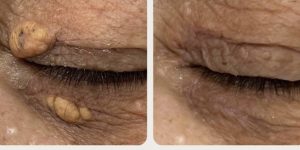
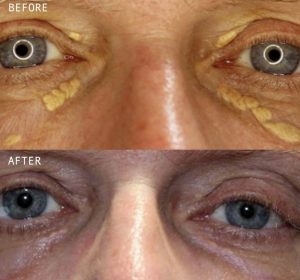
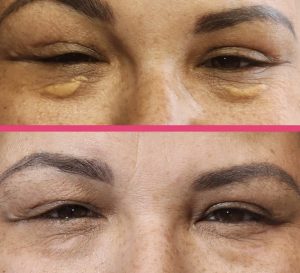

Syringoma
Syringomas are benign skin lesions which are around the eye lid area and can appear around the genital, chest, neck and abdominal area. Syringomas are benign non cancerous bumps normally appear around the lower eyelids and upper cheeks. They are harmless and are caused by over growth of sweat glands and cells. Sometimes Syringomas are linked to diabetes, altered glucose metabolism. Syringomas teen to appear in symmetrical patterns, females are more likely to develop eruptive Syringomas. Syringomas are made from a firm texture which you are unable to squeeze. Syringomas can look similar to viral warts and are often mistaken for cholesterol deposits known as Xanthelasmas, they may look like milias, cysts and whiteheads.
What to Expect After Syringoma Removal?
– Swelling of the area and slight reddening
– The skin may feel a little itchy as the scabbing and healing process takes place
– A warmth sensation takes place in the area where you have been treated
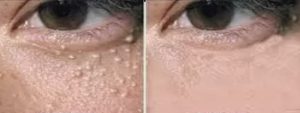
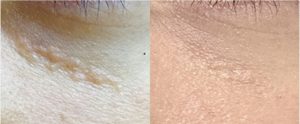
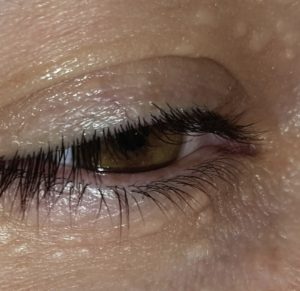
Fibrous Papules
Fibrous Papules are non cancerous benign lesions that grow with ageing. The papule contain collagen and blood vessels. the medical term for fibrous papules is Angiofibroma.
What Causes Fibrous Papule?
Fibrous Papule are benign skin growth are develop due to the natural human ageing process, they can occur with some individuals for no apparent underlying medical problems.
How Long Does Fibrous Papule Last?
A fibrous Papules is very common and usually occur on the nose the mainly occur in young adults and remain the same throughout the life.
Can a Fibrous Papule get Bigger?
Fibrous Papule can do not grow bigger or bleed, they can be removed for cosmetic reasons Fibrous Papule are similar to moles or other benign lesions.
How to Get Rid of Fibrous Papules.
There are many treatments available to remove Fibrous Papule, the following treatments are available to remove the lesions:
–Cryotherapy which uses freezing temperatures to destroy the abnormal tissue where multiple sessions maybe required.
– Laser treatment is a very popular and effective treatment which is non invasive procedure using concentrated beams to target and destroy the excess tissue of the papule. The Laser treatment is minimum downtime or side effects and patients see a difference in one session.
–Electrocautery – is a treatment that uses high frequency energy to destroy the lesion. it is relatively safe and can be used for warts, skin tags, moles too with minimal side effects.
A Fibrous Papule is harmless growth which can be irritated and cause discomfort. If you can speak to your practitioner they will advise you which is best treatment after assessing your skin and your fibrous papule.

